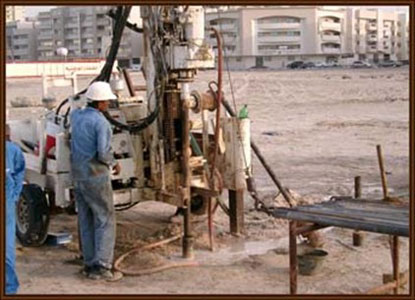Bi-Directional Static Load Test Case History
Hail University-Hail, Saudi Arabia
 |
| Bi-Directional Static Load (BDSL) Testing of Cast In-Situ Working Piles |
 |
| Bi-Directional Static Load (BDSL) Testing of Cast In-Situ Working Piles. |
Details
At the Hail University site in Saudi Arabia the Main Contractor was concerned about performing SLT (Static Load Tests) in an area where the piles were already very congested, concern was expressed by the foundation designer that performing essential Working Pile tests by the SLT reaction-pile method might be detrimental to the structural performance of the building foundations.
After discussion with DuSense the consultant has accepted to use of the Super-Cell BDSL method due to its especially non-intrusive characteristic where load testing can be satisfactorily completed using a non-destructive or non-detrimental technique. It is generally accepted by Structural Engineers that the full bearing capacity of a working pile can be recovered, or very nearly, when load tested by the Bi-Directional Method with Super-Cell.
4 nos 1000mm dia Pile were tested using the Super-Cell Ring Cell© method, the piles were tested to 675tonnes (1.5 x Working Load).
The results of testing showed that the Equivalent Top Down Loaded settlements came well within their permitted levels.
The Super-Cell BDSL method is a new innovative method of testing piles which has numerous advantages over older methods. A comparison between the older and newer methods of testing piles can be downloaded at our website.
To find out more about the products and services which DuSense can provide to the Piling and Foundation Contractors please visit our website at
www.dusense.ae.









